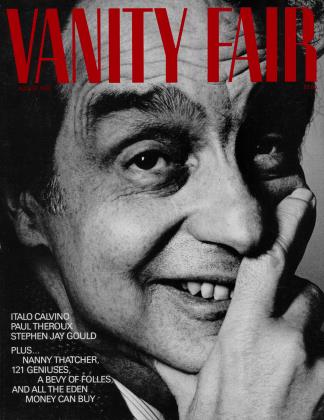Sign In to Your Account
Subscribers have complete access to the archive.
Sign In Not a Subscriber?Join NowAT THE TOP
For six decades, beginning in about 1915, James Van Der Zee photographed Harlem's people as paragons of elegance, grace and tranquillity. Van Der Zee didn't set out to document Harlem: Harlem came to him. He was a self-taught photographer who considered himself an artist, and he was commissioned to memorialize events of public and private history. He'd endlessly rearrange his sitters to find the best angle, and when all else failed, his retouching tools could smooth a bumpy nose or sagging muscles. "If it wasn't beautiful, why I took out the unbeautifulness," said Van Der Zee.
His clients included average citizens as well as celebrities—entertainers Bill "Bojangles" Robinson and Florence Mills; black separatist leader Marcus Garvey and his uniformed militia; revivalists Daddy Grace and Father Divine; athletes Jack Johnson, Joe Louis and Satchel Paige. Generations of loving couples, babies, smiling newlyweds, and members of civic and fraternal organizations posed for him; parties, graduations, confirmations, picnics, political rallies, teas, and funerals were recorded with care. Van Der Zee was Harlem's most famous photographer.
But the post-World War II do-ityourself photography craze cut drastically into his business. He was virtually forgotten for a time— until the Metropolitan Museum of Art featured his work in its "Harlem on My Mind" show in 1969. Ironically, that show made Van Der Zee a star even as he was being evicted from his longtime Harlem home. From 1969 until his death this spring at the age of ninety-six, he received much public attention and was given numerous awards and honors. What he has given us is an incomparable visual memoir, a document filtered through a unique and generous eye.
CAROL SQUIERS
 View Full Issue
View Full Issue






Subscribers have complete access to the archive.
Sign In Not a Subscriber?Join Now